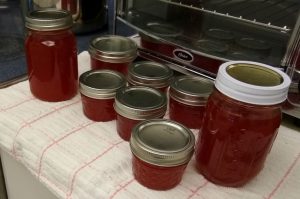 One of the small native trees in the Exploration Gardens is the Flatwoods Plum, Prunus umbellate. This round-topped, deciduous tree is mostly planted for its spectacular display of blooms. In late February, before the leaves appear, these trees take on a white, billowy, almost cloud-like appearance when the small, white flowers bloom, followed by small edible fruits. The plums, which vary in flavor from very tart to sweet, are very attractive to various forms of wildlife, including deer, black bears, foxes, raccoons, squirrels, and many birds.
One of the small native trees in the Exploration Gardens is the Flatwoods Plum, Prunus umbellate. This round-topped, deciduous tree is mostly planted for its spectacular display of blooms. In late February, before the leaves appear, these trees take on a white, billowy, almost cloud-like appearance when the small, white flowers bloom, followed by small edible fruits. The plums, which vary in flavor from very tart to sweet, are very attractive to various forms of wildlife, including deer, black bears, foxes, raccoons, squirrels, and many birds.
Flatwoods Plum thrives in full sun or partial shade on a wide variety of soils. When placed in sandy soil, it grows best with irrigation and some shade in the afternoon. Trees grow quickly when young but considerably slower when mature and bearing fruit. A bit weedy in growth habit, proper training and pruning can create an attractive specimen or small median strip or street tree, especially for planting beneath power lines or in other areas were overhead space is limited. Few root suckers form on this plant; many form on a similar tree, the Chickasaw Plum, Prunus angustifolia.
The purple fruits are tart and rich in pectin. They are used to make jellies, preserves, tart pies, or jams. This year, there was a bumper crop of the wild plums in the Exploration Gardens. I decided to try my skills at jam making. After harvesting the plums, it was labor intensive to remove the seed from each tiny fruit! After that, I followed the directions on the pectin container. The jam turned out to be a beautiful orange-red color and quite tart. I am not sure if I will make it again, but if next year’s harvest is as bountiful, I might not be able to resist!
 0
0



